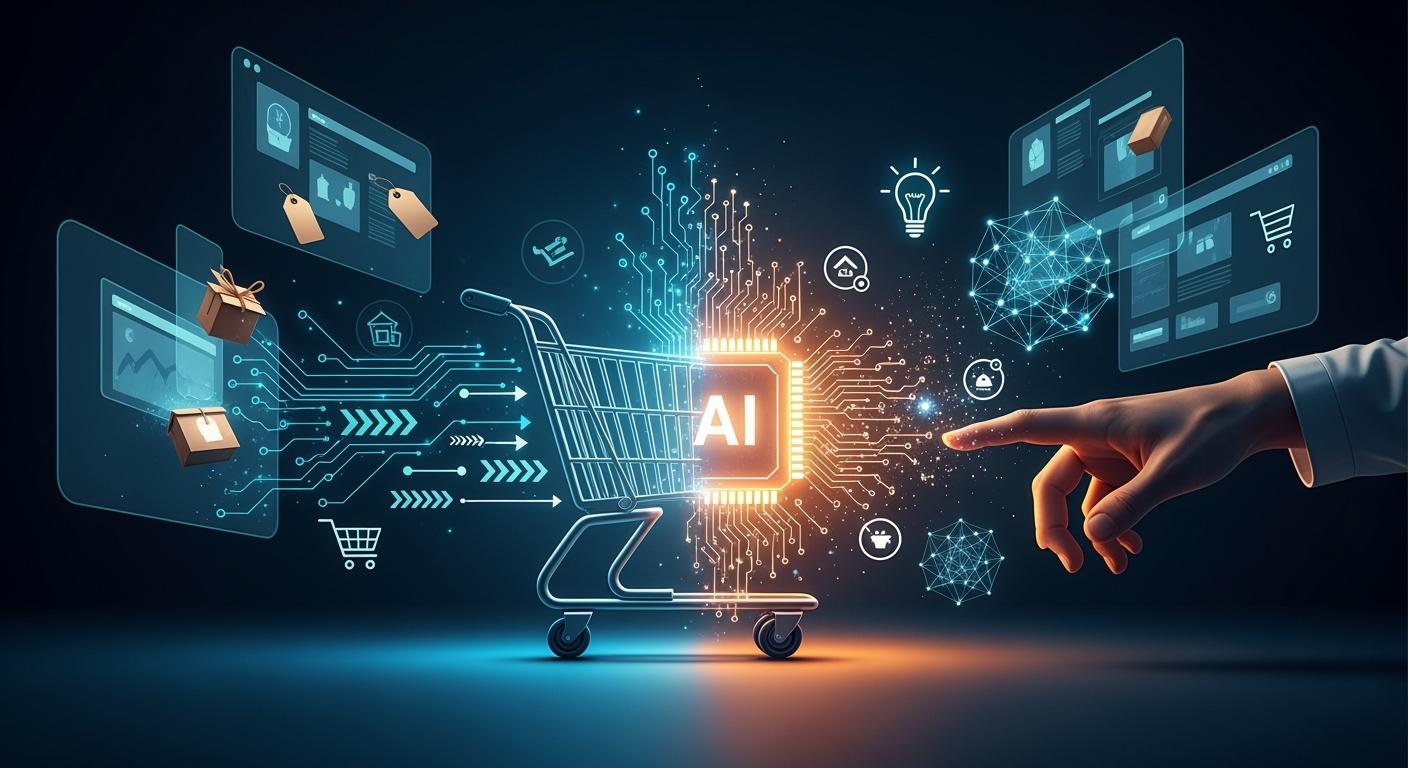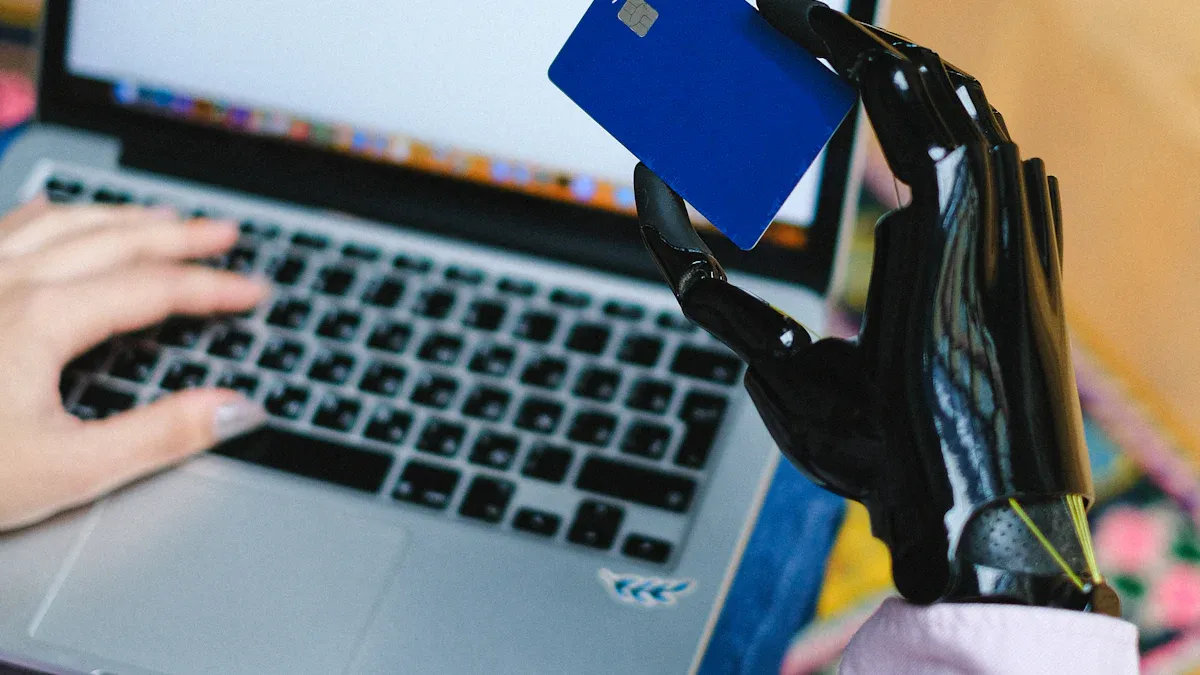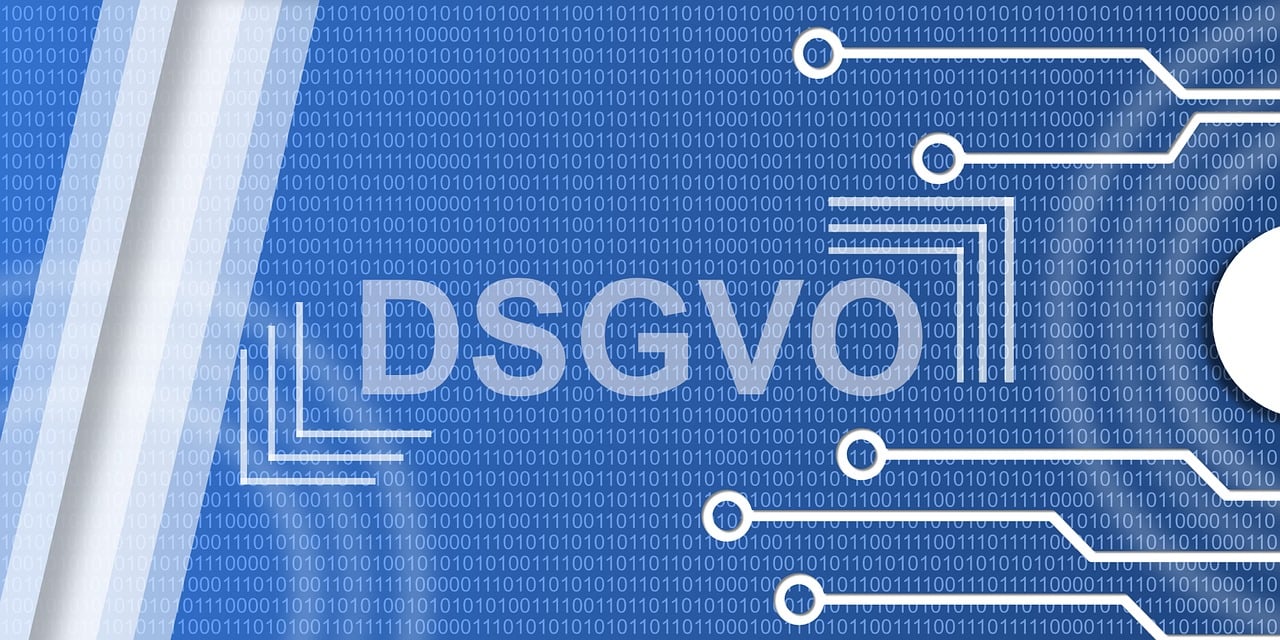The Evolution of Dropshipping: From Speed to Intelligence — How AI Is Reshaping the Future of E-Commerce

As someone who has been in the e-commerce industry since 2015, I’ve witnessed the evolution of dropshipping firsthand — from the early days of copycat stores and viral gimmicks to today’s AI-driven, data-powered era. What used to be a race for speed has now become a battle of intelligence and automation.
In this article, I’ll break down the three major stages of dropshipping, explain how AI is transforming product research, marketing, and fulfillment, and share a practical roadmap for beginners who want to start a sustainable dropshipping business in 2025 and beyond.
Key Takeaways
AI changes dropshipping by doing jobs for you. This lets you spend more time growing your shop.
Smart inventory management with AI helps guess what stock you need. It cuts down on waste and makes customers happier.
Dynamic pricing tools let you change prices quickly. This helps you stay ahead in a busy market.
AI makes customer experience better with personalised marketing. Shoppers feel special and come back more often.
Automated fulfilment makes handling orders easier. It helps deliveries arrive faster and with fewer mistakes.
Data-driven insights from AI help you choose wisely. You can lower risks and pick better products.
Try AI tools slowly. Start with one feature and see how it helps your shop before adding more.
Keep data privacy and security in mind. This helps customers trust you when you use AI in dropshipping.
1. The Three Eras of Dropshipping: From Hype to Intelligence

Era 1: The Speed and Hype Era (2015–2021)
In the early years, success in dropshipping depended on one thing — speed. Whoever could spot a trending product first, copy the ad, and launch faster than everyone else won the game.
Core Strategy: Sellers hunted for viral “wow-factor” products on Facebook or TikTok — such as laser projectors, sunset lamps, or quirky kitchen gadgets — and cloned existing stores to ride the hype wave.
Winning Products: These were impulse-buy novelty items, often appealing because of their coolness, not usefulness.
Challenge: Once the trend cooled down, the product died overnight. The only real winners were those who could copy and launch the fastest.
This era was all about replication, not differentiation.
Era 2: The Data-Driven Brand Era (2022–2024)
As the market matured, the “copycat” model became unsustainable. Ad costs rose, customers became more informed, and cheap gimmicks stopped converting.
Dropshippers began to realize that long-term success required solving real customer problems and building brand trust.
Core Strategy: Focus shifted from “selling hype” to selling value — products that address pain points.
Skills Required: Store owners started learning conversion optimization (CRO), email marketing, and brand storytelling.
Outcome: The industry began separating amateurs from professionals. Viral products without substance (like sunset lamps) no longer survived.
Dropshipping transformed from a “get-rich-quick” side hustle into a data-driven retail model requiring strategy, testing, and customer empathy.
Era 3: The AI-Driven Intelligence Era (2024–2027 and Beyond)
We are now entering the third phase — the AI automation era, where artificial intelligence is reshaping every part of the dropshipping business.
Core Idea: The future winners are not just fast or creative — they are systematically intelligent. They use AI to find, test, and scale products faster than any human team could.
Automation Advantage: With AI tools, one person can now run 5–10 stores simultaneously — automating product research, ad testing, and customer service.
Future Outlook: By 2027, up to 80% of successful dropshipping operations are expected to be managed primarily by AI, not manual human labor.
In this new landscape, dropshippers must think like data-driven product labs, not simple resellers.
2. How to Enter Dropshipping in the AI Era
If you plan to start a dropshipping business in 2025 or later, your mindset and toolkit must evolve. The new rule is simple:
Start from pain points, not products — and embrace AI from day one.
Step 1: Identify Problems, Not Just Products
Instead of chasing viral TikTok gadgets, start by asking: What problems do people actually want solved?
Use AI-powered research tools to analyze:
Reddit and TikTok comments — what frustrations or unmet needs do users discuss?
Amazon reviews — what do customers complain about existing products?
Google Trends + ChatGPT — what topics are rising in searches this quarter?
Focus on content-backed products — items that need explanation, credibility, or lifestyle positioning (e.g., ergonomic devices, wellness gadgets, skincare tools).
✅ High perceived value = higher profits.
If a product solves a painful or emotional issue (like stress relief, posture correction, or skin health), people will pay more for it.
Step 2: Test Fast, Learn Fast
Don’t waste months perfecting a store before validating demand.
Use a hybrid store model: Avoid both single-product and general stores. A hybrid store lets you test multiple niches while maintaining a clean, branded look.
Generate creative assets with AI: Tools like Midjourney or DALL·E can create realistic product images or ad visuals — no photoshoots required.
Run small ad tests: Use short TikTok-style videos generated by Pictory or RunwayML to test engagement before committing inventory.
Once you see promising early data (low CPC, high CTR, or good comment engagement), only then move forward with suppliers and fulfillment.
Step 3: Build Funnels, Not Just Product Pages
The old model of “Shopify product page + Buy Now button” is outdated.
Modern dropshippers use sales funnels that tell a story before selling.
Use advertorials, quizzes, or mini-articles to educate and pre-sell.
Delay showing price until the customer understands the product’s value.
Add bundles, subscriptions, or limited offers to increase average order value (AOV).
Think of your store as a content ecosystem, not a catalog.
3. The AI Tool Stack for Modern Dropshippers

Now let’s talk about the most important part — your AI-powered toolkit.
The right tools can cut your workload by 80% and multiply your speed by 10x.
Here’s a breakdown of the best AI tools by category:
1. AI Assistants and Agents
Category | Recommended Tools | Core Purpose |
|---|---|---|
AI Strategy & Content | ChatGPT, Claude, Gemini | Your AI strategist and copywriter — for market research, ad copy, SEO blogs, and customer scripts. |
AI Agents (Automation) | OpenAI Operator, Agentic AI | Automates multi-step workflows: scraping product data, analyzing reviews, comparing suppliers, and more. |
2. Product Research & Trend Analysis
Category | Tool | Function |
|---|---|---|
All-in-One Automation | AutoDS | One-click product import, auto-fulfillment, AI-generated titles & descriptions, and price optimization. |
Market Spy Tools | Dropship.IO, Winning Hunter | Analyze competitors’ ads, conversion rates, and audience insights. |
TikTok Trend Analysis | Cal Data | Tracks live TikTok Shop sales and emerging products in real-time. |
AI Product Sourcing | Axio | AI engine for identifying trending items and verified suppliers. |
3. Creative Production & Marketing
Category | Tool | Function |
|---|---|---|
AI Ad Generation | Creatify, Pencil | Generate and test ad creatives automatically. |
AI Product Photography | Flair, Canva AI | Produce professional product photos or virtual try-on models. |
AI Video / Virtual Actors | Make UGC, 11 Labs, GenSpark | Create realistic influencer-style ads using AI avatars and voiceovers. |
AI Customer Service | Tidio | 24/7 chatbot for customer inquiries and automated support. |
Localization Tools | 11 Labs | Translate and localize ads into multiple languages for cross-border scaling. |
4. Fulfillment and Supply Chain
Modern dropshipping success depends on speed. The era of 30-day shipping is over.
Platforms like Spocket, ZenDrop, and CJ Dropshipping now connect you to US/EU-based suppliers for 3–7 day delivery.
Tools like AutoDS automate order tracking, pricing updates, and inventory monitoring — ensuring zero manual effort.
With these systems in place, you can scale globally without needing your own warehouse.
4. The Mindset Shift: From Hustler to System Builder
The AI revolution doesn’t mean anyone can “get rich fast.” It means the playing field has changed.
Today, success comes from building intelligent systems, not chasing trends.
Here’s the new formula for modern dropshipping:
Curiosity + Speed + Automation = Sustainable Profitability
Use AI for insight, not shortcuts.
Build processes that compound learning — test, analyze, and iterate.
Focus on customer empathy, not hype.
By 2027, the most successful dropshippers won’t just be store owners — they’ll be AI-integrated entrepreneurs, running lean, intelligent operations powered by data.
Final Thoughts
The dropshipping landscape has evolved from speed-based chaos to AI-powered intelligence.
If you’re starting today, you don’t need massive capital — you need curiosity, adaptability, and the courage to work with AI as your co-pilot.
Leverage tools, automate smartly, and focus on delivering real value.
That’s how you build not just a store, but a scalable digital business in the era of intelligent commerce.
Challenges in AI-Driven Dropshipping

Data Privacy and Security
Customer Information
You collect a lot of customer data when you use AI in your dropshipping shop. People trust you with their names, addresses, and payment details. If you do not keep this information safe, you risk losing that trust. Hackers look for weak spots in online shops. A single leak can damage your reputation. You must use strong passwords and update your systems often. Simple steps like these help protect your customers.
Regulatory Compliance
You also need to follow strict rules about data. Laws like the GDPR in Europe tell you how to store and use customer information. If you break these rules, you could face big fines. Make sure you know what the law says in your country. Always ask for permission before you collect or share data. Keep records of what you do with customer details. This keeps your business safe and legal.
Here’s a table showing some common challenges you might face with AI:
Challenge | Description |
|---|---|
Data Privacy | Keeping customer data safe while complying with security regulations is a major concern. |
Integration Cost | High costs associated with setting up AI systems can be a significant barrier for small businesses. |
Complex System | AI systems can be complicated, requiring IT expertise for effective implementation. |
Data Scarcity | Insufficient or poor-quality data can hinder the effectiveness of AI solutions. |
Technology Dependence
Over-Automation Risks
AI can make your life easier, but you should not let it do everything. If you rely too much on technology, you might stop thinking creatively. Your shop could start to look and feel like every other shop. Customers notice when every website feels the same. You want your business to stand out, not blend in.
Relying on data and algorithms can stifle your creativity.
Too much automation may lead to shops that all look alike.
AI often uses old data, which can make it hard for you to try new ideas.
Tip: Keep some tasks for yourself. Use AI to help, but do not let it take over your whole business.
System Failures
Technology is not perfect. Sometimes, systems crash or stop working. If your AI tool goes down, you might miss orders or send out wrong information. Always have a backup plan. Check your systems often and know what to do if something breaks. Quick action can save you from bigger problems.
Skills and Adaptation
Training Needs
AI tools can be tricky to use at first. You and your team might need to learn new skills. Training takes time and effort. If you skip this step, you could make mistakes or miss out on useful features. Make sure everyone knows how to use the tools you choose.
Keeping Up with Advances
AI changes fast. New updates and tools come out all the time. You need to keep learning so your shop stays ahead. If you fall behind, your competitors might get better results. Set aside time to read about new trends and try new features. Staying curious helps your business grow.
Note: AI brings many benefits, but you must stay alert. Protect your data, balance automation, and keep learning. This way, you can enjoy the rewards of AI without falling into common traps.
Ethical Considerations
Employment Impact
AI changes how you run your dropshipping business. You might notice that some jobs disappear as machines take over simple tasks. For example, AI can handle order processing, stock checks, and even customer service. This means you need fewer people for these jobs. Some workers may lose their roles, especially in low-wage positions.
You might wonder what happens to these workers. Many experts say you should support them with new skills. Reskilling programmes help people learn how to work with AI or move into other jobs. If you use AI, you can help by offering training or sharing resources for learning. This way, you do not just replace workers—you help them grow.
AI can also change how money moves in your business. If only a few people benefit from AI, income gaps may get wider. You should think about how to share the rewards fairly. When you use AI, try to make sure everyone in your team has a chance to succeed.
Here are some key points to keep in mind:
AI can automate many tasks, which may lead to job losses.
Reskilling helps workers find new roles in a changing market.
Fair distribution of AI’s benefits can reduce income inequality.
Remember: Responsible AI means thinking about people, not just profits.
Fairness in AI
You want your dropshipping shop to treat everyone fairly. AI can help, but it can also cause problems if you are not careful. Sometimes, AI systems make decisions that are not fair. This can happen if the data used to train the AI has hidden biases. For example, an AI tool might favour certain products or customers without you realising.
Transparency is important. You should know how your AI tools make decisions. If you cannot explain why the AI chose something, your customers might lose trust. You also need to protect customer data and respect their privacy.
Here are some ways to keep your AI fair:
Make sure your AI systems are transparent and easy to understand.
Check your data for bias before using it to train AI tools.
Protect customer privacy at every step.
Stay accountable for the choices your AI makes.
Tip: Fairness, transparency, and accountability should guide every decision you make with AI.
AI brings many benefits, but you must use it with care. When you focus on fairness and support your team, you build a stronger, more trusted business.
Future of Dropshipping and AI

Emerging Technologies
Machine Learning
Machine learning is changing how you run your dropshipping shop. You can use it to spot trends and guess what customers want. It helps you set prices that keep you ahead. These tools learn from your sales numbers. They help you make better choices without guessing. You can see which products will be popular soon. You can also see which items might not sell well. This means you waste less money and keep customers happy.
E-Commerce Innovations
You will see even more new technology in the next few years. Some tools will make shopping feel amazing. Here is a table showing what is coming soon:
Technology | Description |
|---|---|
Virtual Reality | Lets customers explore products in a virtual world. |
Artificial Intelligence | Gives personal suggestions using customer data to make shopping better. |
Many shoppers want to try things before they buy them. Over a third of people say they would look at more items online if they could use a virtual headset. In fact, 63% think virtual reality will change how they shop in the future. You can use these tools to make your shop special and give customers something new.
Next Decade Predictions
Automation Trends
You will see more automation in dropshipping soon. AI will help you do things faster and with fewer mistakes. Many businesses plan to spend more on AI, especially for tools that create content and manage orders. You can expect:
Faster order handling with less manual work.
Smarter systems that help you make decisions quickly.
Entrepreneurial Shifts
You will notice a change in how people start and grow shops. Entrepreneurs will use AI to find trending products and reach new markets. You will not need a big team or lots of money to compete. AI will help you work smarter, not harder.
Preparing for Change
Adaptation Strategies
You cannot use the same old marketing tricks anymore. One-size-fits-all messages do not work now. Customers want shops that know what they like. You should:
Use AI to spot trending products.
Let machine learning help you set prices and guess demand.
Focus on giving each customer a unique experience.
Brands that ignore these changes risk being left behind.
Growth Opportunities
You have more chances to grow now than ever before. AI-driven dropshipping lets you scale up quickly. You can reach more customers and keep your shop running smoothly. As one expert puts it:
AI-driven dropshipping on platforms like eBay uses automation and AI tools, which are important for following rules, making money, and growing fast. This is different from old e-commerce models that often use manual work, showing the speed and efficiency of AI-driven ways.
If you use these new tools, you can build a shop that grows with you and meets your customers’ needs.
You have watched dropshipping change a lot over time. It started in old markets and now uses smart AI tools. Today, AI helps you work faster and spot new trends. You can use it to make your shop run better. Here is how things are different now:
AI lets you do product research, ads, and help customers without much effort.
Social media and caring for the planet are now important in your market.
Using automation and looking at data are now needed to do well.
To keep up, see if you are ready. Check this table for what to do next:
Step | What You Should Do |
|---|---|
Use new tools together to give customers what they want. | |
Employee Training | Show your team how to use AI in their work. |
Data Privacy | Keep customer data safe so people trust your shop. |
Keep learning and be ready for new things. Trying new ideas will help your business grow in e-commerce.
FAQ
What is AI-driven dropshipping?
AI-driven dropshipping uses smart tools to automate tasks. You can manage stock, set prices, and help customers with less effort. These systems learn from your shop’s data and help you make better decisions.
How does AI help you choose products?
AI checks trends and customer behaviour. You get suggestions for popular items before they become mainstream. This helps you add winning products to your shop and stay ahead of competitors.
Can AI improve customer service in dropshipping?
Yes, AI chatbots answer questions quickly. You can give instant updates and solve problems fast. Customers feel valued when you respond right away.
Tip: Use chatbots to handle common questions and free up your time.
Is it safe to use AI with customer data?
You must protect customer information. Use strong passwords and update your systems often. Always follow privacy laws like GDPR. Customers trust you more when you keep their data safe.
Will AI replace jobs in dropshipping?
AI automates simple tasks, so you may need fewer staff. You can help your team learn new skills. Training helps everyone adapt and find new roles in your business.
How do you start using AI in your dropshipping shop?
Begin with one AI tool, such as automated pricing or chatbots. Test it with a few products. Check results and add more features when you feel confident.
Step | What to Do |
|---|---|
Choose Tool | Pick one AI feature |
Test | Try it on some products |
Review | Check results |
What are the biggest challenges with AI in dropshipping?
You may face data privacy risks, system failures, and high setup costs. Keep learning about new tools. Always have a backup plan for technology problems.

TangBuy: A Smarter Way to Dropship in 2025
If you're looking to stay competitive with dropshipping in 2025, speed and trend-awareness are key. TangBuy helps you stay ahead with real-time product trends, fast fulfilment, and factory-direct sourcing. With over 1 million ready-to-ship items, 24-hour order processing, and seamless Shopify integration, TangBuy makes it easier to test, scale, and succeed in today's fast-moving eCommerce landscape.
See Also
A Comprehensive Blueprint for Starting Your Dropshipping Venture in 2025
Essential Strategies for eBay Dropshipping Success in 2025
Profitable Dropshipping Concepts to Explore in 2025
Comparing Dropshipping and Amazon FBA: Which Profits More in 2025
Ten Essential Dropshipping Applications for Shopify Stores in 2025

